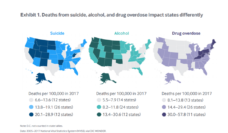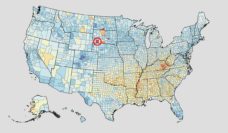Young adults drink alcohol everywhere: on couches after work, at parties and bars, on the beach during spring break. Drinking substantial amounts of alcohol is almost a rite of passage for the majority of young adults. And no other age group faces the consequences of drinking as often, including emergency department visits, traffic accidents, and cognitive impairment.
Young adults drink heavily for multiple reasons: alcohol helps cope with stress. Drinking is a social activity at this stage of life. And, according to a growing body of research, alcohol use is related to neighborhood factors like poverty and social status.
Isaac Rhew and team measured the impact of neighborhood characteristics on the drinking habits of 700 Seattle-area youth aged 18-23. Every month over the course of the two-year study the participants reported how much alcohol they drank, whether this consumption resulted in any negative consequences, and where they lived.
Participants consumed, on average nearly five drinks each week. This number decreased as they got older. Participants enrolled in a four-year college drank more while they were on campus than they did at home.
Thoughtful responses to youth drinking should lead us to ask what conditions and resources need to change in our communities so young residents have more control over their alcohol usage.
Participants reported over two consequences from drinking, consequences from a list including items as benign as “while drinking, I have said or done embarrassing things” and as serious as “I have driven a car when I knew I had too much to drink to drive safely.”
As they compared different neighborhoods, the researchers found that alcohol use and consequences were more common in places with high poverty, compared to those with low poverty. This finding mirrors similar community-level studies about how neighborhoods differ in alcohol use.
But this study goes a step further. Because the study design allowed the researchers to follow participants over time, the data offered insight on changes in alcohol use and consequences as young adults moved from one zip code to another. Researchers found that as people moved from richer neighborhoods to poorer ones, they drank more and reported more alcohol consequences.
Under-resourced neighborhoods are places where neighborhood violence is more common, where families are more likely to have concerns about affording necessities, and housing is often substandard. These conditions create stress that is especially tough on younger adults still learning to process it. And the communities lack resources necessary to help residents navigate through these complex feelings and emotions. Instead, many of these neighborhoods are served by alcohol outlets at rates surpassing wealthier neighborhoods. The combination of stress, lack of resources to cope with stress, and relatively high densities of alcohol retailers pushes young adults to alcohol use.
Thoughtful responses to youth drinking should lead us to ask what conditions and resources need to change in our communities so young residents have more control over their alcohol usage.
Photo via Getty Images














